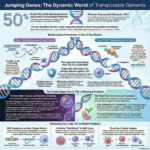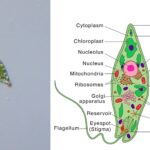IB Biology 15 Views 1 Answers
Sourav PanLv 9November 9, 2024
How does anorexia contribute to the breakdown of heart muscle?
How does anorexia contribute to the breakdown of heart muscle?
Please login to save the post
Please login to submit an answer.
Sourav PanLv 9May 15, 2025
Anorexia nervosa significantly contributes to the breakdown of heart muscle through a combination of malnutrition, metabolic changes, and physiological adaptations that occur as the body attempts to conserve energy. Here’s a detailed explanation of how anorexia affects heart muscle integrity and function.
Mechanisms of Heart Muscle Breakdown in Anorexia
- Malnutrition and Nutrient Deficiency:
- Anorexia leads to severe caloric restriction and malnutrition, depriving the body of essential nutrients, including proteins, vitamins, and minerals necessary for maintaining muscle mass and function. This deficiency results in the body breaking down its own tissues, including heart muscle, to meet energy needs and maintain vital functions.
- Energy Conservation:
- In response to starvation, the body enters a state of energy conservation. The heart, like other muscles in the body, begins to atrophy due to reduced energy intake. This atrophy is characterized by a decrease in cardiac muscle mass, particularly affecting the left ventricle, which is crucial for pumping blood throughout the body. The heart becomes smaller and weaker, making it less effective at circulating blood (reduced cardiac output).
- Bradycardia and Low Blood Pressure:
- Individuals with anorexia often experience bradycardia (abnormally slow heart rate) as a consequence of decreased metabolic demand and energy conservation. A slower heartbeat can lead to inadequate blood flow and oxygen delivery to tissues, exacerbating muscle breakdown, including that of the heart muscle. Additionally, low blood pressure (hypotension) can occur due to reduced blood volume and weakened heart function.
- Structural Changes:
- Prolonged malnutrition can lead to structural changes in the heart muscle. Studies have shown that individuals with anorexia may exhibit left ventricular hypertrophy or dilation due to the loss of muscle mass and altered hemodynamics. The heart’s chambers may enlarge while its walls become thinner and weaker, further impairing its pumping ability.
- Electrolyte Imbalances:
- Anorexia can cause significant electrolyte imbalances (e.g., low potassium and magnesium levels), which are critical for normal cardiac function. These imbalances can lead to arrhythmias (irregular heart rhythms), increasing the risk of severe complications such as sudden cardiac death. Prolonged QT intervals on electrocardiograms are common in these patients and can predispose them to life-threatening arrhythmias like Torsades de Pointes .
- Hormonal Changes:
- Starvation induces hormonal changes that affect cardiovascular health. For instance, decreased levels of thyroid hormones due to malnutrition can further impair cardiac function and metabolism. The body’s stress response may also elevate cortisol levels, which can have negative effects on muscle tissue.
Consequences of Heart Muscle Breakdown
- Increased Risk of Heart Failure:
- The combination of weakened heart muscle, reduced cardiac output, and arrhythmias increases the risk of heart failure in individuals with anorexia. As the heart struggles to pump effectively, symptoms such as fatigue, dizziness, and fainting may occur.
- Sudden Cardiac Death:
- Anorexia nervosa is associated with a high risk of sudden cardiac death due to arrhythmias resulting from electrolyte imbalances and structural changes in the heart . This risk underscores the critical need for monitoring cardiovascular health in individuals with this eating disorder.
- Reversibility with Treatment:
- The good news is that many of these changes can be reversed with appropriate treatment, including nutritional rehabilitation and weight restoration. Studies have shown that restoring weight can lead to improvements in cardiac structure and function. Early intervention is crucial for preventing irreversible damage.
0
0 likes
- Share on Facebook
- Share on Twitter
- Share on LinkedIn
0 found this helpful out of 0 votes
Helpful: 0%
Helpful: 0%
Was this page helpful?




